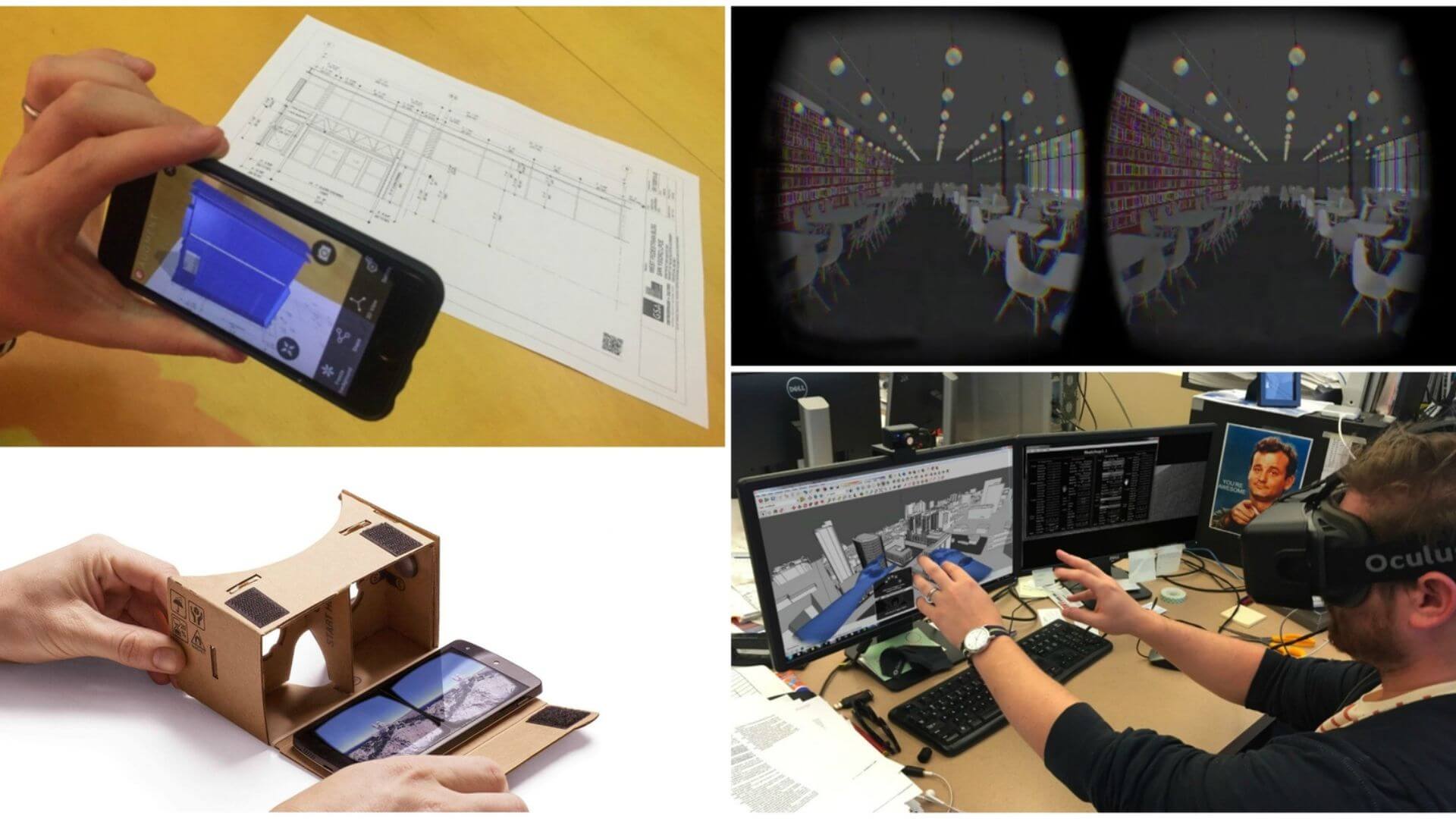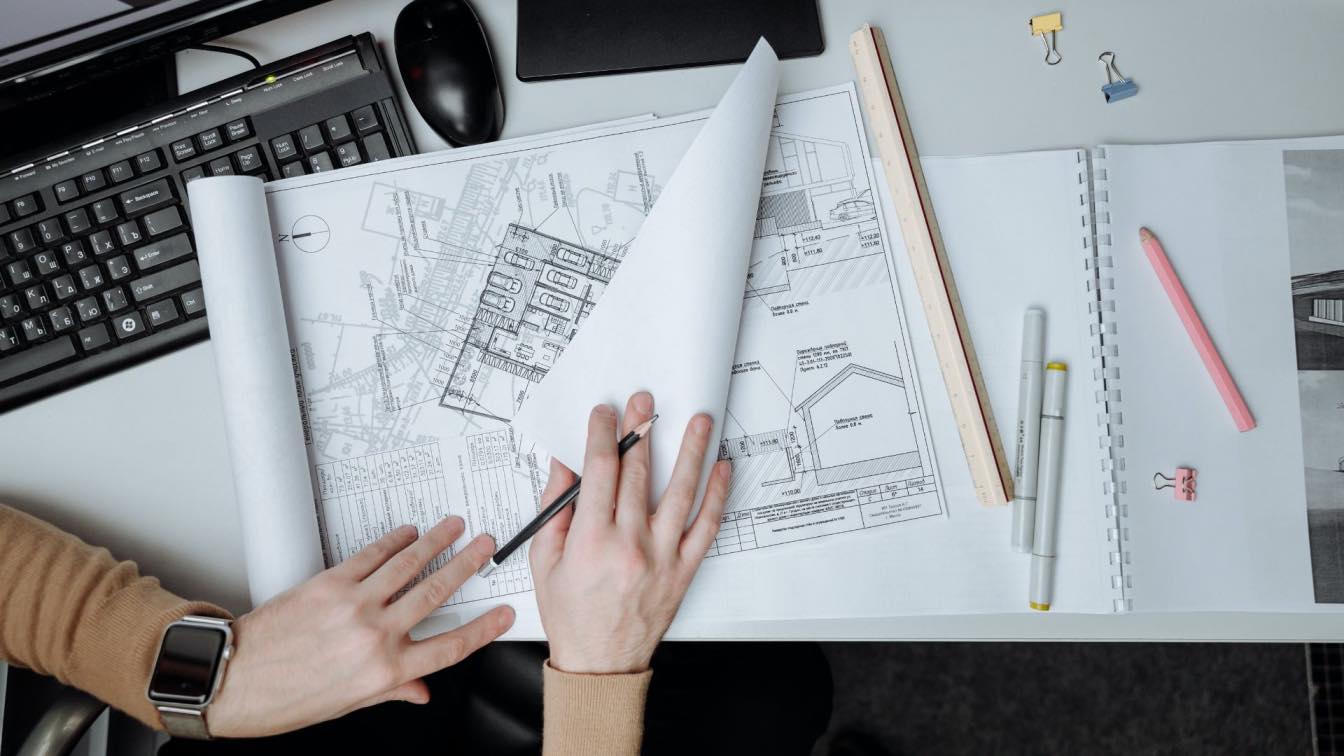Virtual reality (VR) and augmented reality (AR) seem to have been mediated as interdisciplinary tools in most fields, and architecture and design have not failed to join this wave of progress. Professionals in the field have strived to utilize the utmost of this exciting technology by incorporating it into every phase of the project, starting from the very manifestation of their imagination to the actual implementation in real life.
As we will see in this article, that approach did not only serve architects or designers but also users or clients on the receiving end of this creative transaction. This article will demonstrate how AR and VR affect design processes in all aspects.
How Virtual and Augmented Reality Are Used in Architecture?
Countless, yet efficient! Let us explore a few of the most innovative applications of VR and AR in architecture, design, and modeling.
Real-Time Rendering and Navigation of the Project
With something seemingly simple as a head-mounted display (HDM), VR and AR can visualize and augment 2D designs or 3D models to hyper-realistic environments for architects to navigate. In the process, architects achieve accurate dimensional perception and an understanding of depth and scale.
Since models can be examined from different angles and vantage points, that accelerates and facilitates the inevitable revisions involved in any project. It is impossible with conventional rendering processes such as scaled prototypes or animations.
A Realistic Visualization of Future Implications
In a study published in ScienceDirect, a peer-reviewed journal that publishes scientific, medical, and technical research papers, the researcher examines the major impact of indoor environmental issues in buildings and VR’s role in enhancing their environmental performance. VR enables architects to realistically visualize factors that affect indoor conditions, such as light, heat, and ventilation.
This live imitation offers insight into how such factors can interact with and impact building plans which in turn allows architects to detect and address any environment-related issues before the actual construction of the building.
Provide Virtual Tours and Presentations
As easy as conducting a guided VR tour throughout a famous museum or a tourist site, an architect or a client can also tour and navigate the construction site without physically visiting the location.
VR and AR also enable the architect to present a design or model to a potential client in an engaging virtual experience unparalleled to the standard 3D model or animation. Such straightforward navigation generates practical feedback from the user and sets the designer apart from competitors while pitching projects to potential clients.
Why Virtual Reality and Augmented Reality Are Important For Architecture?
In a 2019 report conducted by RIBA, the Royal Institute of British Architects, and Microsoft, the worldwide tech giant, exploring the technological advancement in architecture, researchers surveyed over 300 professionals operating in architectural settings and found the following:
35% of architects employ at least one variant of augmented or virtual reality in their work
29% of the participants intend to utilize these technologies in the next five years
These inspiring findings underline the staggering expansion of VR and AR technologies in the field, which further attests to their importance.
Architects not only envision the model but also establish a comprehensible communication medium between themselves and other concerned parties, namely users or clients, stakeholders, and collaborators.
The user, who is not traditionally involved in the design process, can now experience and recognize different conceptual, structural, electrical, and mechanical features of a building plan. Going beyond blueprints and scale models, this technology redefines the modeling process and saves resources and tools during the early design phase.
Benefits of Augmented Reality in Architecture
The following are four key advantages of augmented reality in architecture that we should look at and see how architects can benefit from them.
Reasonable Start-up Cost
Starting an architectural practice that utilizes VR or AR from square one is relatively affordable, depending on the required setup and hardware. HDMs prices usually range from $600 to $800 per unit. Starting a business can be challenging. Being an entrepreneur architect has nuances and details, but it's well worth it.
Selling an Idea
Clients or users can walk through sophisticated elevations, furniture, and textures from the layout of their imagination and view and experience different elements of the design. Suppose you have previously designed models that you wish to view in AR for business or design purposes. In that case, the AR platform for architects is an invaluable tool that facilitates viewing 3D models in augmented virtual reality on mobile devices.
Client Communication and Feedback
After viewing and interacting with the VR or AR-rendered model, the client can provide factual feedback based on an authentic viewpoint. This eases the modification process for the architect and replaces meticulous floor plans with a visual description that successfully translates the architect’s design intent and vision for non-expert clients.
Ease in Collaboration
Large-scale projects often entail the involvement of several architects or designers. Using VR simplifies the project's sharing process by offering greater workflow and collaboration flexibility. It also transcends geographical barriers, allowing team members or even freelance architects from different countries to collaborate on a single project easily.
Final Thoughts
The endless possibilities and applications of virtual and augmented reality in every field are endlessly fascinating. As an emerging and transforming force in the architecture and design industries, VR and AR are redefining design and building in an engaging experience that puts architects, users or clients, companies, and stakeholders right in the heart of the design.





